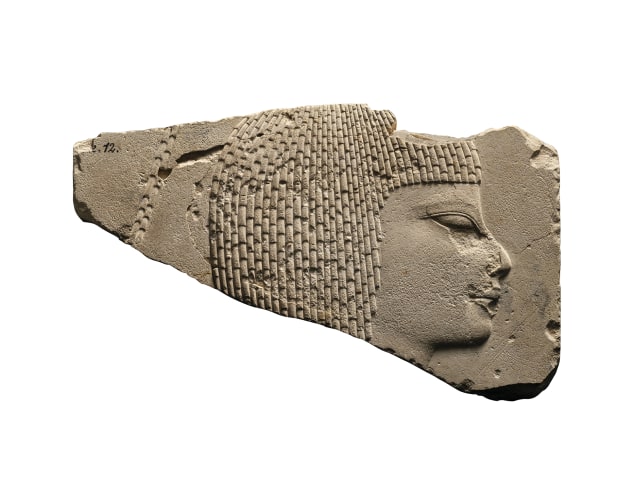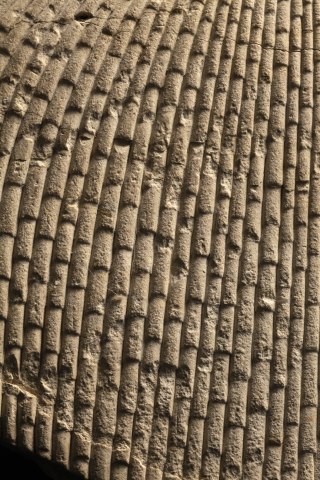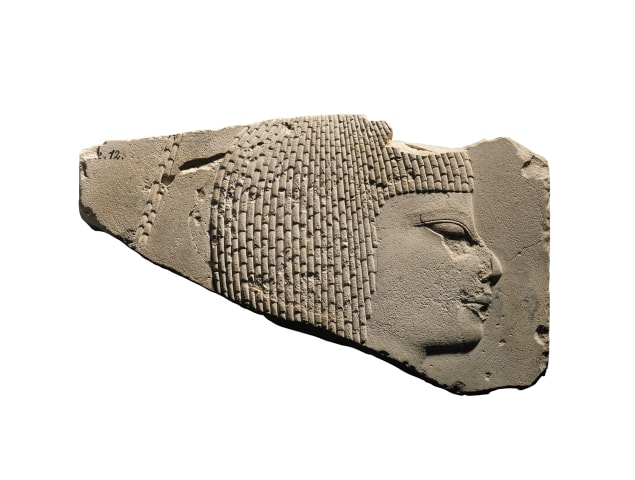Egyptian sculptor's trial piece fragment, Late Dynastic Period, neo-Memphite, 30th Dynasty, c.380-343 BC
Limestone
Height: 8.1cm, width: 13.4cm
11225
%3Cdiv%20class%3D%22title_and_year%22%3E%3Cem%3EEgyptian%20sculptor%27s%20trial%20piece%20fragment%3C/em%3E%2C%20%3Cspan%20class%3D%22title_and_year_year%22%3ELate%20Dynastic%20Period%2C%20neo-Memphite%2C%2030th%20Dynasty%2C%20c.380-343%20BC%3C/span%3E%3C/div%3E%3Cdiv%20class%3D%22medium%22%3ELimestone%3C/div%3E%3Cdiv%20class%3D%22dimensions%22%3EHeight%3A%208.1cm%2C%20width%3A%2013.4cm%3C/div%3E%3Cdiv%20class%3D%22price%22%3E%C2%A3%2019%2C000%3C/div%3E
Carved in raised relief with the head of a courtier, wearing an echeloned wig which frames the finely detailed face. The almond-shaped eyes are narrow and angled upwards towards the...
Carved in raised relief with the head of a courtier, wearing an echeloned wig which frames the finely detailed face. The almond-shaped eyes are narrow and angled upwards towards the outer corners, the lips are plump and the nose straight. Behind the head are two strands of an echeloned wig; presumably a practice for the main relief. The left and right hand corner of the relief finished, the upper and lower broken away, the reverse smooth. Collection number ‘Ae.12.’ written in black paint in the top left corner, and on the reverse. Recomposed from large fragments, a few areas of lifting consolidated and touched in, particularly under the eye.
The 30th Dynasty was the last dynasty of an independent Egypt. It lasted until the Achaemenid reconquest in 343 BC. The current example can be placed within this dynasty as it was at this period that the infest workmanship of the Late Dynastic Period can be seen. The finesse of the carving is exemplified by the way the curls of the wig are wider at the front of the head, get narrower around the ear and then widen again towards the back. The shape of the elongated eye is also typical of the 30th Dynasty.
Provenance
Prof. Dr. Roland Bay (1909-1992), Orselina, Switzerland; collection no.Ae.12, acquired in the 1950s, thence by descent
Bay was a dentist in Basel, and had a keen interest in
European prehistory. In 1953 he was made head of the
anthropological department at the Museum of Cultures in
Basel.





